


See the Resume Example
Physical Therapist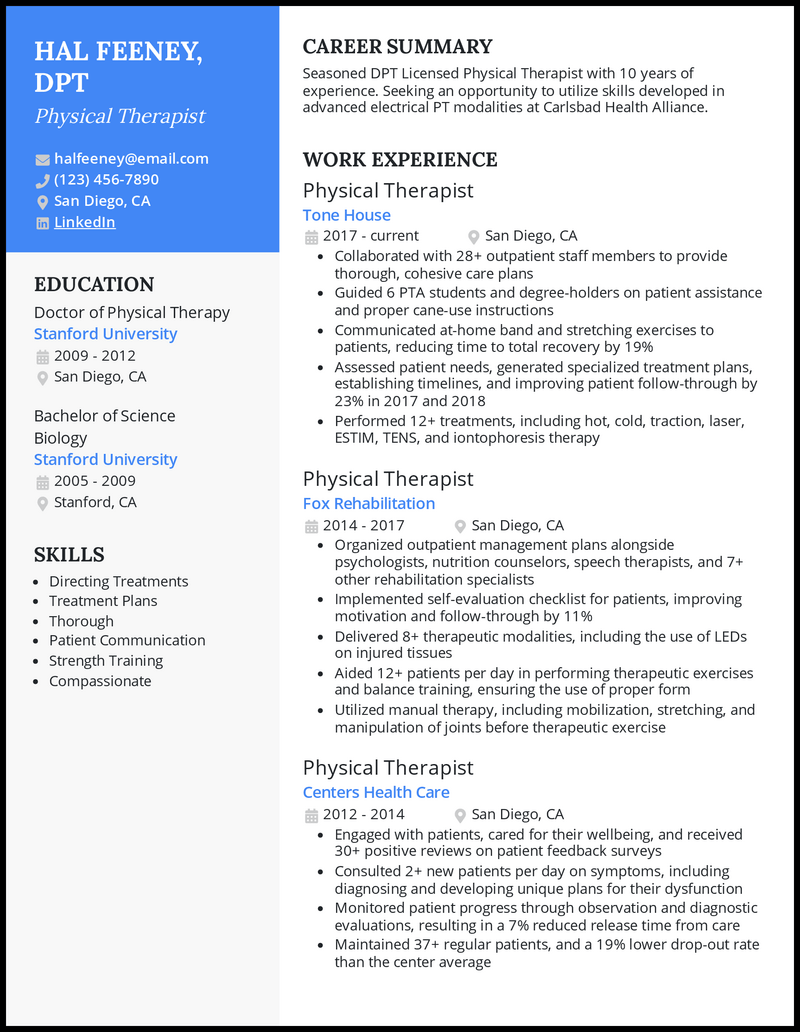 example with 11 years of experience" />
example with 11 years of experience" />
See the Resume Example
Physical Therapist Internship
See the Resume Example
Physical Therapy Student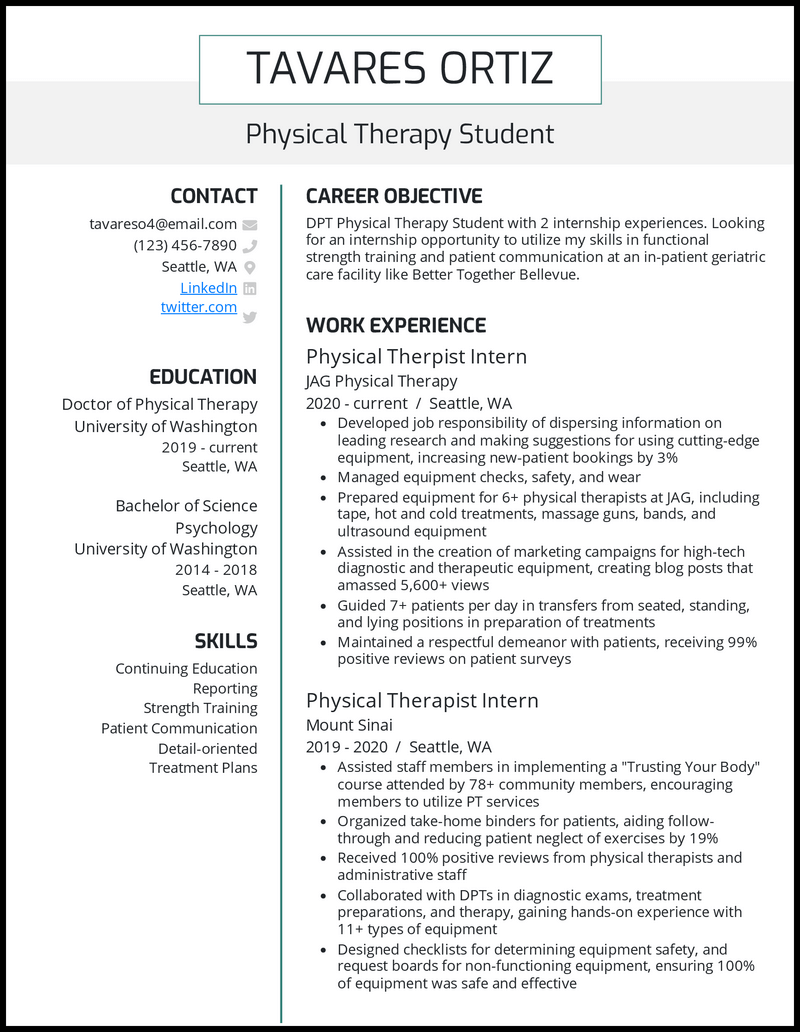
See the Resume Example
New Grad Physical Therapist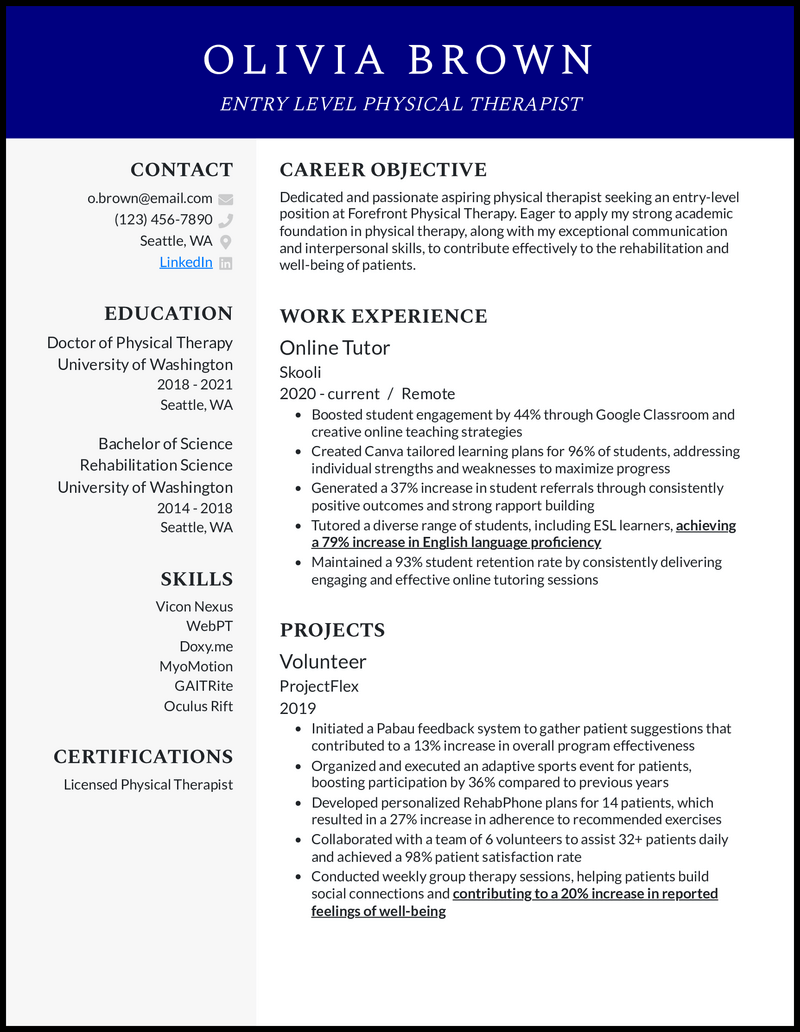
See the Resume Example
Experienced Physical Therapist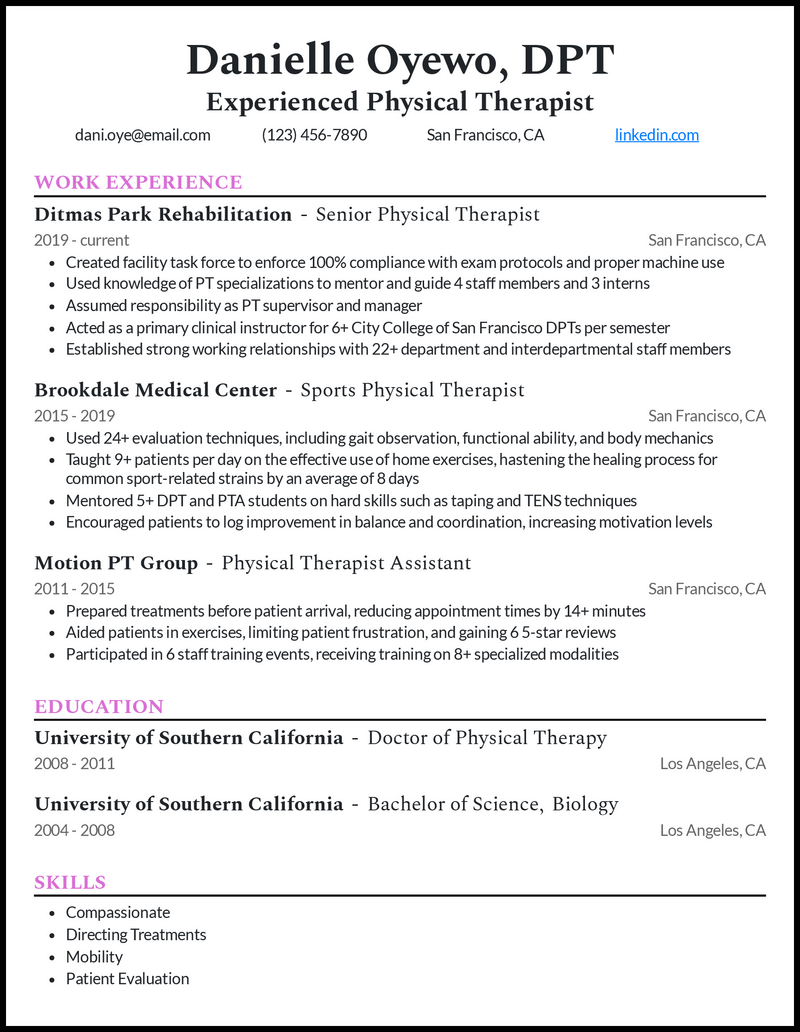
See the Resume Example
Physical Therapy Aide
See the Resume Example
Physical Therapy Technician
See the Resume Example
Sports Physical Therapist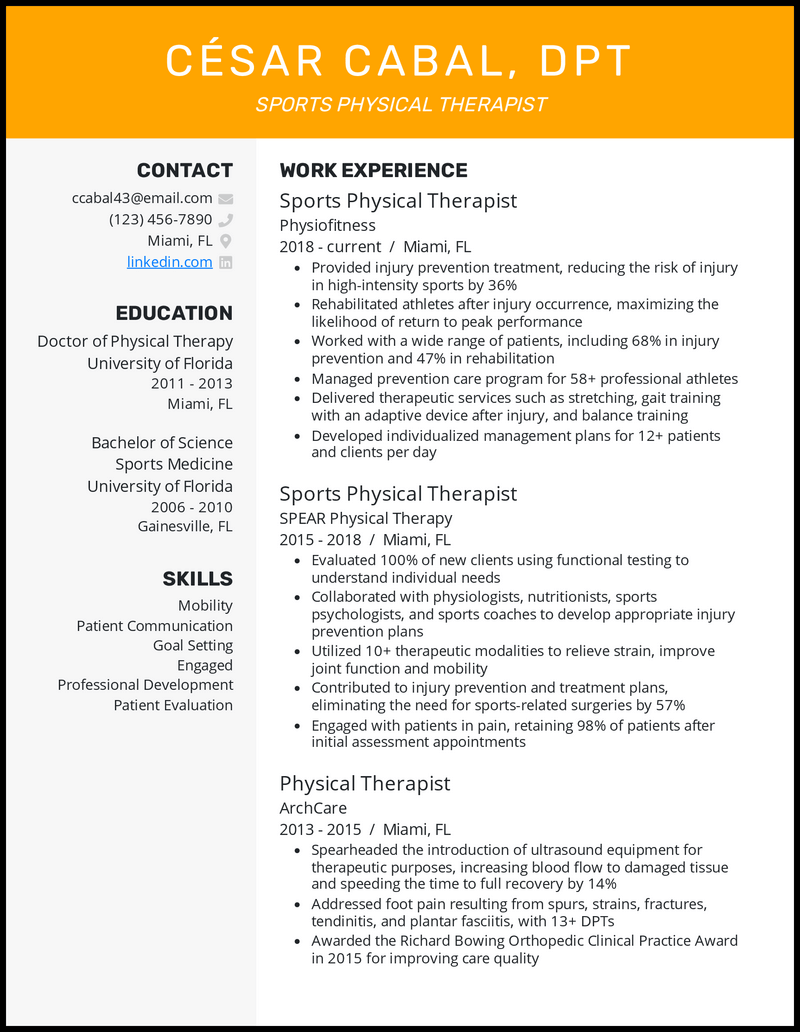
See the Resume Example






There’s plenty of room in our elegant resume template to add your professional experience while impressing recruiters with a sleek design.
Like this template? Customize this resume and make it your own with the help of our Al-powered suggestions, accent colors, and modern fonts.
You may be ten years into your physical therapy career or working hard toward your advanced degree. Either way, you’re way too busy changing lives to worry about how you should build a resume, not to mention whether you should use a cover letter generator!
We scrutinized hundreds of resumes from physical therapists to tease apart what does and what doesn’t work to help get you interviews in 2024.
With the continued aging of the boomer generation, physical therapist job growth is far exceeding the national average. But the competitive salaries and amazing job prospects generate intense competition. Use these physical therapist resume samples and guide to set yourself apart from the crowd and get more interviews in 2024.
 example with 11 years of experience" width="800" height="1032" />
example with 11 years of experience" width="800" height="1032" />









It’s time to move on to your physical therapist cover letter, right?
Not so fast! Having a well-formatted resume makes it easier for hiring managers to pay attention to what really matters—your experience in the field. Make your resume readable, logical, and complete with a smart structure.
![]()
There are three resume formats that are the most popular for 2024

Writing an effective resume is an art that can be tough to learn. We at BeamJobs have spent countless hours mastering the craft, so don’t be hard on yourself! Take it slow, section by section, and you can avoid a lot of frustration. You could think of it like physical therapy, slow and steady progress is the best!
But if you don’t have the time or you find the process tedious, an online resume builder can do the heavy lifting for you.
Now, let’s turn to the meat of your resume. The resume sections
![]()
Alright, let us be the first to let you know you don’t necessarily need a resume objective or summary section. But, there are a few times when physical therapists should seriously consider adding one.
Objectives help you communicate your skills and interests in a specific job, whereas resume summaries demonstrate honed specializations and how they’ve quantifiably helped you over the course of your career in physical therapy. Use a resume objective if you’re light on work experience (or going through a substantial career change), and use a summary if you’re a bonafide PT legend with 10+ years of experience.
Examples often make these statements easier to understand, so here are a few poor examples followed by some customized ones:
Poor Objective: highly skilled physical therapist, who’s ready to take the next career step.
Poor Summary: Many years of working experience in PT and PT-related fields.
Why they’re poor: These are vague and nonspecific, and, let’s face it, these both just take up precious room on your resume.
Customize your statement like the objective below instead:

Or dazzle the employer with a brief but tailored summary like this one:

![]()
Your work experience is important, and we get that every job you’ve held is important to you. But, unless you have limited work experience or you’re under 20, we doubt that the job you held when you were 16 is relevant to your PT resume. Stick with choosing the most related, recent two to four work experiences you have for your resume.
![]()
If you’re the type of physical therapist who’s constantly obsessing about the grammar on your treatment plan notes, you’ll be thrilled to learn that grammar is critically important on your resume. For the rest of us who would rather forget learning about adverbs in middle school, this topic may fill you with dread.
Rest assured, though, because there are only a few areas where you need to pay special attention
Here are some strong work experience examples:
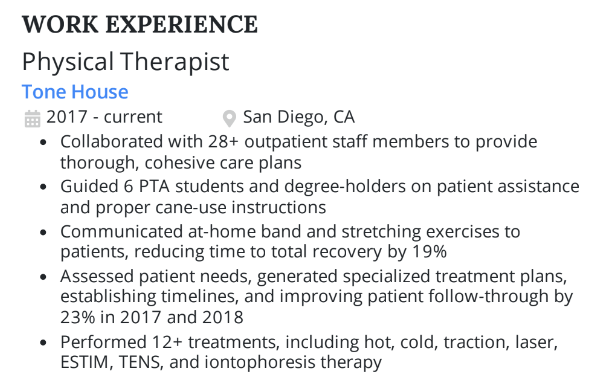
These work because they start with action words, use consistent punctuation (no periods at the end of sentences), avoid personal pronouns, are written in the past tense, and are informative and interesting to read.
![]()
You might want to pull out your old patient records because it’s time to figure out how many sessions you’ve treated patients for (on average) before they graduated from PT. Informative metrics like this are valuable to the hiring team because, while anyone certified can say they’re a great physical therapist, numbers prove you can get the job done when it counts.
Aim for including metrics on 50 percent or more of your bullet points, and if that seems like a difficult number to achieve, focus on leveraging metrics from things like:
![]()
The skills section is one of the most important, yet underused of resumes in 2024. But, why is it so important?
First off, the skills section gives you a chance to use keywords that the Applicant Tracking Systems software is looking for. Use six to ten skills with a combination of hard and soft (with extra emphasis on hard skills) to up the chances that your abilities match the desired keywords.
Second, the skills section lets the hiring team know if you’re a good match for that specific job. It’ll help highlight if you’re more skilled in acute sports injury, geriatric injury, or paralysis rehabilitation, for example. Employers will seriously appreciate you making their job easier!
Here are some skills you might want to consider adding to your resume:
Why these work: These resume skills are specific to the field, emphasizing hard (like “acute care”) over soft skills (such as “organized”), and they let employers know what your specific skill set really is.
![]()
Starting the next chapter of your professional career is no joke. We know it can be overwhelming even at the best of times, but you should give yourself a pat on the back! You’ve taken the first step to making your resume the best possible representation of your career and ambitions.
If you’ve been following along this guide with your resume open in another tab, making edits as you read, then go ahead and run your work through our resume checker to get AI-powered tips and a “resume score” that will help you further refine it. Or, if you’ve just realized that your resume needs a total re-do, our resume builder can help you create a properly-formatted resume from the ground up, helping you avoid mistakes and frustration from the start.